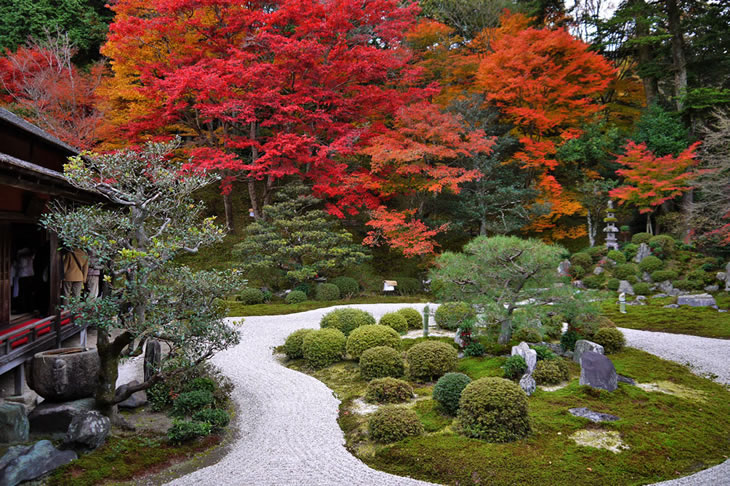Mashu-in temple was originally built for Japanese Buddhist monk Saicho during Enryaku period, 728A.D to 806 A.D, in Mt Hieizan area. Around mid of 10th century, Japanese Buddhist monk Zasen changed the name of the temple to Touobo. In 1656, the temple has transferred to current place by Ryoshonyudosinno (良尚入道親王) and the name has changed to Manshuin.
Ryoshonyudosinno was not only the chief monk of the Tendai school but he was an influential person and had deep knowledge of culture, haiku, flower arrangement and garden planning, so he influenced .
Garden

The garden is a typical zen garden and it portrays nature by gravel stones and rocks. Like typical zen garden, some stones represent waterfalls and some represent islands in river. Everything in the garden represent something from in nature. Even the drawing room represents ship flow on the river.


There are two moss grounds called Tsuru-shima (Crane island) and Kame-shima (Turtle island) on the gravel stones. In Tsuru-shima, 400-year-old-pine-tree is grown. The pine tree represents crane. In Japan, crane and turtle are symbol of luckiness.
